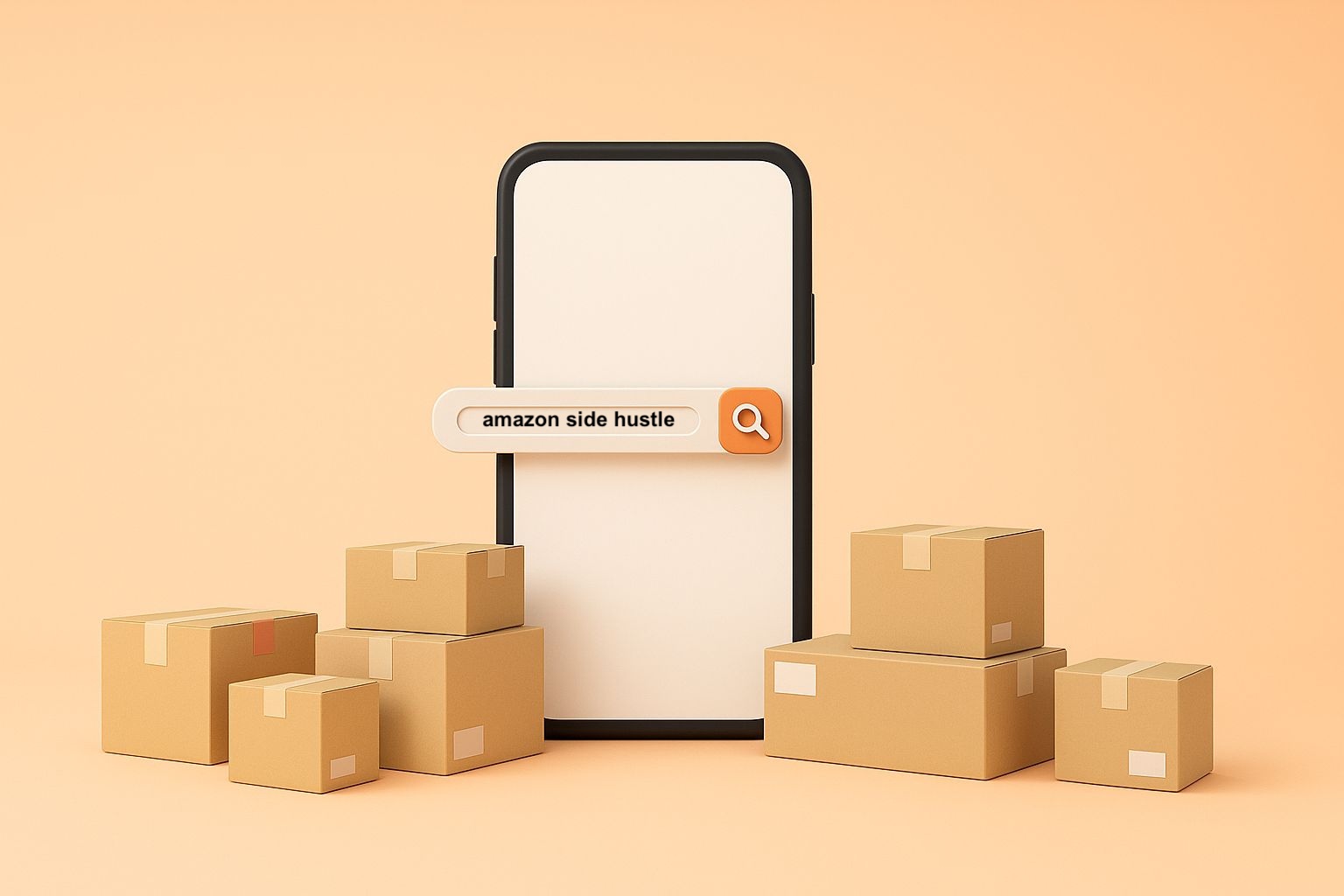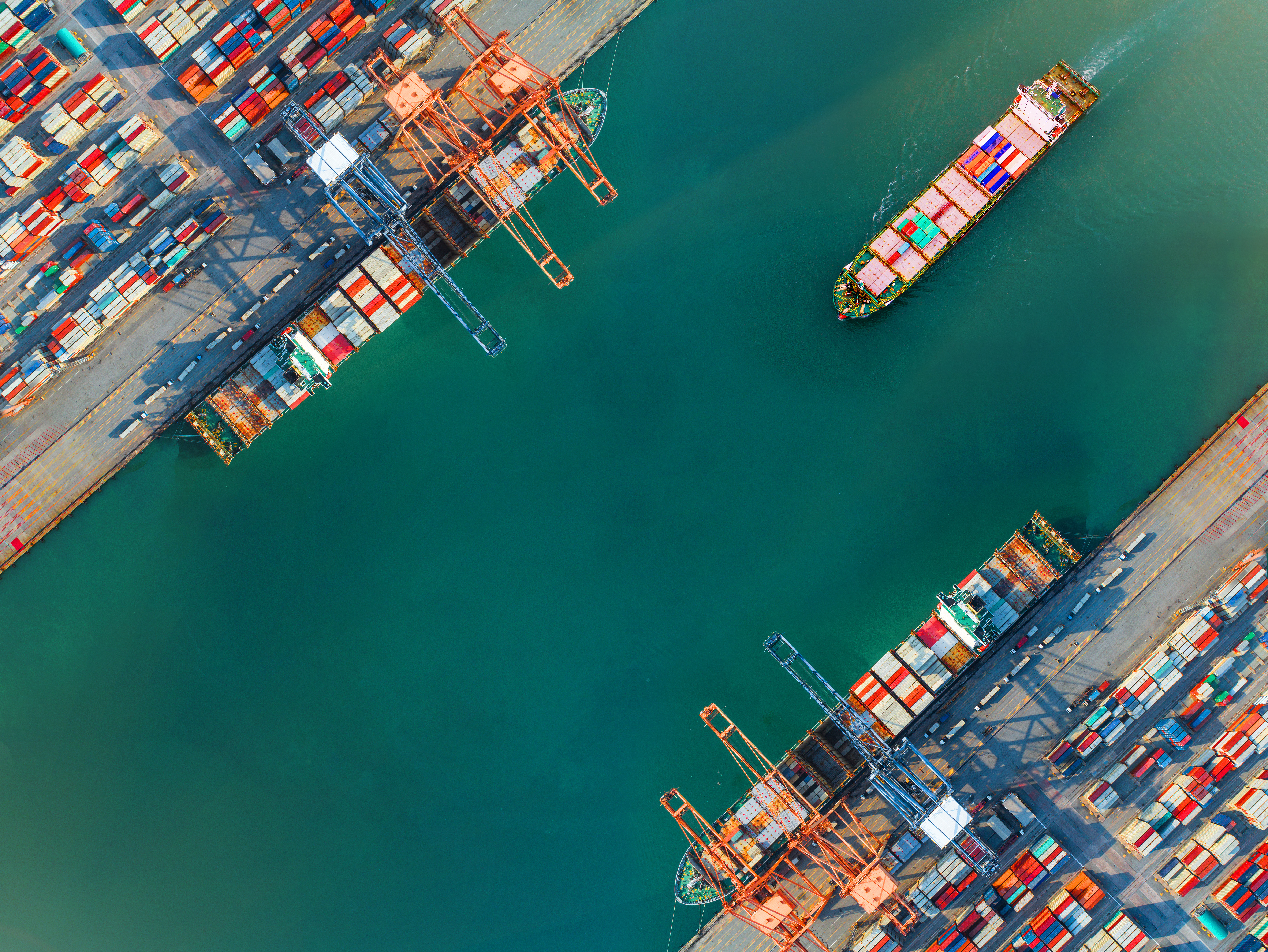What is dropshipping and how does it work? The complete guide 2025

In e-commerce, there are many different business models. Some swear by arbitrage, others run their own shop with independent logistics, and yet others rely on Amazon FBA. Less common and sometimes viewed with suspicion is the dropshipping method. Perhaps it is because classic dropshippers do not hold their own inventory. Or the popularity among self-proclaimed YouTube gurus has harmed its image too much. In any case, dropshipping is better than its reputation, especially for beginners in the e-commerce business who want to learn and first gain valuable experience.
In this guide, we want to answer all important questions: What dropshipping means exactly, how it works, what advantages and disadvantages exist, how beginners can find suitable providers, and whether there are good alternatives.
What is dropshipping? Definition explained simply
In contrast to the classic online retailer, who purchases goods, stores them, and ships them to the customer after an order is received, dropshipping does not involve holding any inventory. Instead, the wholesaler or manufacturer supplies the customer directly. The actual provider of the products acts merely as an intermediary. They offer the products, take care of advertising and online presence, but do not have any items in stock.
For the customer, this has no further relevance. For them, the impression is created that all services are provided from a single source, as the actual sender of the goods does not appear directly and the products are either not branded at all or are appropriately customized. This model has several advantages for both the online retailer and the manufacturer, as each saves a significant part of the delivery and distribution chain.
By the way: Dropshipping concepts are not a new invention, but have long been known under the term “stretch business.” Under the English buzzword, they have particularly arrived in the bubble surrounding passive income.
How does dropshipping work?

Online retailers and wholesalers or manufacturers share the work. The products are offered online – for example, in their own shop, on Amazon, eBay, or Etsy. The online retailer is responsible for the product presentation and advertising. When a customer places an order, it is received in the retailer’s systems and is – usually automatically – forwarded to the manufacturer. The manufacturer then takes care of ensuring that the product is produced if necessary and/or shipped from their warehouse. The customer still receives all information (order and shipping confirmation, tracking, invoice, etc.) from the online retailer and not from the dropshipping partner.
In the event of a return or if the customer contacts customer service, this is usually handled by the online retailer. However, there are also models where the manufacturer or wholesaler takes care of these areas. For the customer, these processes are usually invisible, as the sender address, the logos used, etc. are typically provided by the online retailer.
Wholesale warehouse vs. consignment warehouse
Basically, there are two different types of dropshipping. Either the fulfillment is done through a wholesale warehouse or through a consignment warehouse.
Both models have advantages and disadvantages that each online retailer must weigh individually.
Advantages and disadvantages of dropshipping
In dropshipping, (negative) experiences with dropshipping suppliers from Europe, Asia, etc. are usually shared reluctantly in public. Because understandably, no one wants to damage the established trading relationship on which their business essentially depends. Nevertheless, those interested should thoroughly engage with the general advantages and disadvantages of this business model in order to make the most informed decision possible.
Advantages
Disadvantages
Starting with dropshipping: Finding suitable partners

Finding the right dropshipping provider who ships products quickly, pays attention to quality, and ideally also handles returns management is not easy. Therefore, take your time and thoroughly examine your options before committing. You should pay attention to the following aspects:
Finding dropshipping products in 2025: What suppliers are available?
There are now a variety of dropshipping providers. Which one suits you as an online retailer is very individual. Below, we provide only a rough overview of the most well-known manufacturers and wholesalers.
AliExpress/Alibaba
On AliExpress, interested parties can find a huge selection of products at low prices. However, retailers must also expect longer delivery times from Asia to Europe and the USA. Additionally, the quality of the products is not always guaranteed.
Oberlo
Oberlo is conveniently integrated directly into Shopify, providing a user-friendly platform and additionally a direct connection to AliExpress. However, products cannot always be customized.
Printful
Everyone who values personalized products is in the right place here. This provider also excels in fast shipping and product quality. However, this comes at a price, resulting in narrower profit margins.
Spocket
This provider offers fast delivery times to the EU and the USA, a good selection of products, and good integration into existing e-commerce systems. However, the prices are higher and compared to Asian providers, the range is limited.
SaleHoo
SaleHoo provides access to an extensive list of verified suppliers from around the world. However, there is no direct sale of products here, so merchants must actively seek partnerships.
Doba
The same concept is followed by Doba. In addition to the supplier database, products can also be searched and purchased directly on the platform. A monthly fee is charged for usage.
CJ Dropshipping
A large product range, fast shipping to the USA and Europe, as well as good customization options for products make this provider popular. However, product quality can vary and individual branding incurs additional costs.
Modalyst
Here, the focus is on high-quality, unique products. Since collaboration is with regional suppliers, the shipping speed is also commendable. However, corresponding product prices are charged for this.
Wholesale2b
A very large product range from international suppliers and integration into existing e-commerce platforms characterize Wholesale2b. A monthly fee is charged for this, and possibly additional shipping costs (depending on the supplier).
Also, keep in mind that you are not forced to work with just one provider. On the contrary: to prevent delivery difficulties, reduce dependency, and expand your product selection, it is even very advisable to have multiple dropshipping suppliers on hand.
Alternatives to the dropshipping business

Dropshipping is a good way to enter e-commerce, but far from the only one. What alternatives do beginners and experienced merchants have?
Arbitrage
Arbitrage (Retail or Online) refers in e-commerce to the exploitation of the price difference between two or more markets in order to make a profit. In this process, a product is purchased in Market A at a lower price and then resold in Market B at a higher price. For example, a microwave from a popular manufacturer can be purchased at a discounted price of 299 euros at Walmart. This model is sold for 249 euros on Amazon. Due to the different prices, merchants can thus make a profit of around 50 euros.
This business model is suitable for beginners, as it requires relatively low initial investments, the risk is manageable, and there is a high degree of flexibility. However, the profit margins are usually not that good and the research effort is high.
Wholesale/Trade Goods
Trade goods, or in modern terms wholesale, refers to the sale of licensed brand products. It is, alongside private labels, the most well-known and probably also the most popular concept on the Amazon marketplace. Sellers act as traditional intermediaries. For example, they purchase electric toothbrushes from Oral-B in a certain quantity and resell them with a markup.
However, the competitive pressure is very high, especially on Amazon. Additionally, larger quantities of products usually need to be purchased, which further increases the financial risk.
Private Labels
Private Labels are products that merchants produce and sell under their own brand. Although the goods are usually manufactured by third parties, the merchant takes control over the branding, design, and packaging. Private label products are typically exclusively available from the respective merchant, which can provide a competitive advantage with reduced competitive pressure. Additionally, private labels have high profit margins.
However, the risk is particularly high here, as at least initially, no established brand can be relied upon. The initial investments can also be enormous, and brand building must be managed independently.
Manufacturing/In-house Production
Instead of purchasing products from a third party, merchants can also develop and manufacture products themselves. However, high initial investments are often required here as well, and specialized knowledge in product design and possibly production is necessary. On the other hand, sellers have the highest possible control over their goods, which are guaranteed not to be sold anywhere else.
This path is not particularly suitable for beginners in e-commerce, as setting up production, quality control, and the supply chain are very complex.
White Labels
In white labeling, the merchant sells products from a manufacturer that are already completed and simply adds their branding. Unlike private label products, white label products are not customized but only branded with the merchant’s own brand (logo, packaging, etc.). The entry is usually not as time-consuming, as the products are already available, and the investments remain manageable.
At the same time, standardized goods always carry the risk that others will sell the exact same product as well. Additionally, white labels cannot be tailored to the merchant’s own target audience.
Amazon FBA
Fulfillment by Amazon (FBA) is essentially not a standalone product concept, but rather describes the method of fulfillment. Nevertheless, it can be considered an alternative to dropshipping. Those who trade using FBA send their goods to an Amazon logistics center, where they are stored. When an order comes in, the trading platform takes care of all further steps – from picking and packing to shipping, customer service, and returns processing. This makes it extremely easy for newcomers in the business to sell their first products, as they do not have to worry about the time- and cost-intensive logistics. Instead, they can rely on Amazon’s extremely high standards.
However, this comes at a price and reduces profit margins. Nevertheless, shipping through Amazon is practically part of the inventory for many professional online retailers.
Conclusion

Despite its somewhat tarnished image, dropshipping is a promising business option in e-commerce, especially for beginners. The low initial investments, the absence of own inventory, and the high flexibility allow new merchants to enter online retail without significant financial barriers and to gain valuable practical experience. Additionally, dropshipping offers the opportunity to provide a wide range of products and to scale the business easily.
Nevertheless, aspiring dropshippers should not overlook the associated challenges. Low profit margins, dependence on reliable suppliers, and difficulties in brand building require careful planning and a strategic approach. A thorough selection of partners and effective management of customer relationships are essential for long-term success.
Despite these disadvantages, dropshipping is an attractive entry opportunity into e-commerce. With the right approach and a conscious handling of the specific challenges, merchants can optimally leverage the advantages of this model and create a solid foundation for their online business, which they can then gradually expand from this point.
Frequently Asked Questions
Dropshipping is an e-commerce model where retailers sell products without storing them themselves. They forward orders to suppliers who ship the goods directly to the customers. To do this, one selects a niche, builds an e-commerce shop (e.g., Shopify) or Amazon Seller account, and integrates dropshipping suppliers.
As soon as a customer orders, the retailer buys the product from a supplier who ships it directly to the customer. In this process, the intermediary earns from the difference between the purchase and selling price.
Choose a niche, create an online store (e.g., with Amazon, Shopify, or WooCommerce), then find reliable suppliers (e.g., AliExpress, Spocket) and promote your products.
No, it sounds easy, but it requires a lot of work in areas such as product research, marketing, customer service, and supplier management to be successful.
Earnings vary widely. Some earn only a little, while successful retailers can make thousands per month. Key factors are the margins, traffic, and business acumen.
Yes, dropshipping is legal as long as applicable laws are followed, such as those regarding taxes and consumer protection.
Dropshipping is a business model in which a retailer sells products that are shipped directly to the customer by a third party, without the retailer having to store the goods themselves.
Islamic jurisprudence on dropshipping varies. It could be considered haram if the retailer sells goods that they do not own or have no control over the quality. In other cases, however, it is permissible if the contracts and transactions are transparent and fair.
Image credits in the order of the images: © Steve – stock.adobe.com / © madedee – stock.adobe.com / © Sergej Gerasimov – stock.adobe.com / © See Less – stock.adobe.com / © atipong – stock.adobe.com







